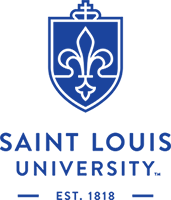Newswise — Ryan Geismar of Manhasset, N.Y., wasn't expected to live after he was born with 70 percent skin erosion. He's now 4 years old and attending preschool. Ryan will meet with dermatology professionals from around the world at Saint Louis University School of Medicine on Thursday, Sept. 18, as part of a scientific workshop that aims to better understand skin erosion so that more effective treatments can be developed.
Ryan and his mother are one of nine families from as far away as New York, Canada and Alaska who will participate in the workshop on Skin Erosion and Wound Healing in Ankyloblepharon-Ectodermal Defect-Cleft Lip and/or Palate (AEC). The workshop, taking place Sept. 18-19, is sponsored by the National Foundation for Ectodermal Dysplasias and hosted by the department of dermatology at Saint Louis University School of Medicine.
The workshop will focus on skin erosion as manifested in the AEC syndrome (also known as Hay-Wells syndrome), which is one of the 150 ectodermal dysplasia (ED) syndromes. Eighteen dermatologists and scientists from around the world will participate in the workshop to evaluate the affected children, who range in age from 2 to 16. The event is intended to be the starting point for directing research into understanding and treating skin erosion associated with some ED syndromes. Local and regional dermatologists and other health care providers with an interest in this condition are invited to participate as well.
Their findings could literally save the lives of children who, like Ryan, were born with severely eroded skin.
Elaine C. Siegfried, M.D., associate clinical professor in the department of dermatology at Saint Louis University, a pediatric dermatologist and a member of the NFED Scientific Advisory Board, is chairing the workshop. Dr. Scott Fosko, chairman of the department of dermatology at Saint Louis University School of Medicine, is hosting the event.
Dr. Siegfried said this workshop is much needed and will have a significant impact on the health and well-being of individuals affected by the skin erosion associated with Hay-Wells. This workshop also will have significant positive outcomes for all individuals with skin erosion or skin and wound healing problems, she said.
"Dr. Siegfried has designed a wonderful workshop that will begin in our traditional grand rounds format with the invited patients examined by our guest experts and all attendees, " Dr. Fosko said. "The workshop panel of world-renowned educators, researchers and clinicians has a wide range of expertise and special interests in molecular genetics, wound healing, angiogenesis and gene therapy as it relates to this rare condition."
The ED syndromes are a group of heritable disorders causing derivatives of the ectoderm (i.e. hair, nails, teeth and glands) to develop and function abnormally. An estimated 7 in 10,000 births results in a child being affected by an ED syndrome, according to the Birth Defects Encyclopedia. In addition to skin erosion, other symptoms of AEC include cleft lip and palate, sparse or absent eyelashes, malformed or absent nails, small, missing or malformed teeth, inability to perspire and fusion of the upper and lower eyelids. Intelligence is normal.
Located in Mascoutah, Illinois, the NFED is the only nonprofit organization in the United States providing services to individuals affected by ED.
MEDIA CONTACT
Register for reporter access to contact detailsCITATIONS
Skin Erosion and Wound Healing in Ankyloblepharon-Ectodermal Defect-Cleft Lip and/or Palate (AEC)
